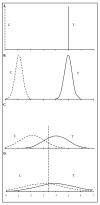Science, medicine, and intercessory prayer
- PMID: 17146135
- PMCID: PMC3275584
- DOI: 10.1353/pbm.2006.0064
Science, medicine, and intercessory prayer
Abstract
Among the many recent attempts to demonstrate the medical benefits of religious activity, the methodologically strongest seem to be studies of the effects of distant intercessory prayer (IP). In these studies, patients are randomly assigned to receive standard care or standard care plus the prayers or "healing intentions" of distant intercessors. Most of the scientific community has dismissed such research, but cavalier rejection of studies of IP is unwise, because IP studies appear to conform to the standards of randomized controlled trials (RCTs) and, as such, would have a significant advantage over observational investigations of associations between religious variables and health outcomes. As we demonstrate, however, studies of IP fail to meet the standards of RCTs in several critical respects. They fail to adequately measure and control exposure to prayer from others, which is likely to exceed IP and to vary widely from subject to subject, and whose magnitude is unknown. This supplemental prayer so greatly attenuates the differences between the treatment and control groups that sample sizes are too large to justify studies of IP. Further, IP studies generally do not specify the outcome variables, raising problems of multiple comparisons and Type 1 errors. Finally, these studies claim findings incompatible with current views of the physical universe and consciousness. Unless these problems are solved, studies of IP should not be conducted.
Figures

Similar articles
-
Research on Intercessory Prayer: Theoretical and Methodological Considerations.J Relig Health. 2017 Dec;56(6):1930-1936. doi: 10.1007/s10943-015-0172-9. J Relig Health. 2017. PMID: 26743876 Review.
-
Just another drug? A philosophical assessment of randomised controlled studies on intercessory prayer.J Med Ethics. 2006 Aug;32(8):487-90. doi: 10.1136/jme.2005.013672. J Med Ethics. 2006. PMID: 16877631 Free PMC article. Review.
-
The effect of intercessory prayer on wound healing in nonhuman primates.Altern Ther Health Med. 2006 Nov-Dec;12(6):42-8. Altern Ther Health Med. 2006. PMID: 17131981
-
Divine intervention? A Cochrane review on intercessory prayer gone beyond science and reason.J Negat Results Biomed. 2009 Jun 10;8:7. doi: 10.1186/1477-5751-8-7. J Negat Results Biomed. 2009. PMID: 19515229 Free PMC article.
-
God, science, and intercessory prayer.Arch Intern Med. 2002 Jun 24;162(12):1422-3; author reply 1423. doi: 10.1001/archinte.162.12.1422. Arch Intern Med. 2002. PMID: 12076249 No abstract available.
Cited by
-
The association between spirituality and depression in parents caring for children with developmental disabilities: social support and/or last resort.J Relig Health. 2015 Feb;54(1):358-70. doi: 10.1007/s10943-014-9839-x. J Relig Health. 2015. PMID: 24531793
-
Prayer and healing: A medical and scientific perspective on randomized controlled trials.Indian J Psychiatry. 2009 Oct-Dec;51(4):247-53. doi: 10.4103/0019-5545.58288. Indian J Psychiatry. 2009. PMID: 20048448 Free PMC article.
-
Research on Intercessory Prayer: Theoretical and Methodological Considerations.J Relig Health. 2017 Dec;56(6):1930-1936. doi: 10.1007/s10943-015-0172-9. J Relig Health. 2017. PMID: 26743876 Review.
References
-
- Aviles JM, et al. Intercessory prayer and cardiovascular disease progression in a coronary care unit population: A randomized controlled trial. Mayo Clin Proc. 2001;76(12):1192–98. - PubMed
-
- Benson H, et al. Study of the Therapeutic Effects of Intercessory Prayer (STEP) in cardiac bypass patients:A multicenter randomized trial of uncertainty and certainty of receiving intercessory prayer. Am Heart J. 2006;151(4):934–42. - PubMed
-
- Bolton B. Intercessory prayer. Ann Intern Med. 2001;135(12):1094. - PubMed
-
- Byrd RC. Positive therapeutic effects of intercessory prayer in a coronary care unit population. South Med J. 1988;81:826–29. - PubMed
-
- Cha KY, Worth DP, Lobo RA. Does prayer influence the success of in vitro fertilization-embryo transfer? Report of a masked, randomized trial. J Reprod Med. 2001;46(9):781–87. - PubMed
MeSH terms
Grants and funding
LinkOut - more resources
Full Text Sources
Research Materials
